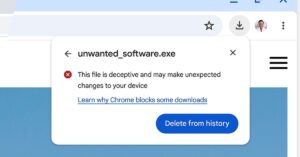I was interested in T-Mobile’s Home Internet service from the first time I heard about it: it’s $50 (a price that includes the specialized router), contract and data cap-free, and is powered by 5G and LTE instead of phone lines or cable. As many people in the US can probably relate, I’m not in love with my traditional ISP — I often push up against its 1.2TB data cap, and $80 per month feels like a lot to pay for the supposedly 400Mbps service I get. So I wondered: could I, a remote worker and heavy internet user who likes to stream video, play multiplayer games, and do cloud backups, actually be fine with internet delivered through the air instead of a cable?
After a few weeks of testing, it seems like the TL;DR answer is no; despite T-Mobile’s site telling me my address is eligible, the router almost always had a “weak” cellular signal, and there were so many drop-outs and slowdowns that even my non-techie wife was fed up with it after a few weeks. The thing about cellular internet, though, is that my experience won’t necessarily be the same as yours, even if you live a few blocks away from me. So take this review for what it is: one person’s experience with what the service is like in one tiny, non-specific part of eastern Washington state.
:no_upscale()/cdn.vox-cdn.com/uploads/chorus_asset/file/23086507/mclark_211109_4928_0001.jpg)
Before we get into the particulars of my experience, though, let’s start with what’ll be universal to those using the service: the router hardware and setup process. The router supports Wi-Fi 6, which is nice to see, and has a small circular touchscreen on top that you can use to see various statistics like how many devices are connected to your network and how good its cellular connection is. On the back, there’s a place to plug in the (frankly massive) power brick, two Ethernet ports, a power button, and a few pins that let you plug in a battery backup.
Looking at that picture, you may be just as excited as I was when you see that there’s a USB-C port. I have no idea why the router’s manufacturer, Nokia Solutions & Networks, put it there, but it and the RJ-11 phone port are currently non-functional, according to the router’s manual (pdf). Bummer!
After you plug the router in and turn it on, it’ll prompt you to download T-Mobile’s app using a QR code displayed on its screen. I had a lot of frustrations with the app at first, until I realized that I had to connect to the router’s Wi-Fi network before hitting the “setup device” button. As far as I can tell, that step isn’t included in the quick setup guide, nor is it hinted at in the app itself. The setup process was a breeze after I figured that out, though, with the app prompting me to choose a name for my network and to set a password (the default name and password are printed on the bottom of the device if you’d rather just leave it as-is). Then, the app told me it was time to find a good spot to put the router where it could pick up a strong signal.
:no_upscale()/cdn.vox-cdn.com/uploads/chorus_asset/file/23086515/mclark_211213_4928_0009.jpg)
:no_upscale()/cdn.vox-cdn.com/uploads/chorus_asset/file/23086512/mclark_211211_4928_0006.jpg)
That process was actually quite fun. The router has a battery in it, so you can walk around with it and test out the signal strength in different spots. (The battery doesn’t seem to work as a backup power source, though. If it’s not plugged into power, you won’t be getting any Wi-Fi.) As I mentioned before, though, this feature didn’t help me out much; upstairs or downstairs, right next to a window or in the absolute middle of my house, I got a steady two bars of service (out of five) — even taking it outside didn’t help, not that I could’ve left if there had I gotten perfect signal.
The app doesn’t make it clear if you’re using LTE or 5G, but digging into the router’s web GUI, you can see what cellular bands it’s making use of. After Googling band designations, I was able to determine that, at time of writing, the router was primarily connected to LTE and was using 5G as a secondary connection. Of course, as T-Mobile says on its site, that could change based on “signal strength and availability, time of day, and other factors.”
:no_upscale()/cdn.vox-cdn.com/uploads/chorus_asset/file/23099655/Screen_Shot_2021_12_15_at_12.52.13.png)
I ended up putting the router in what I felt like would be the most advantageous place: on a windowsill upstairs, facing the city. From there, all that was left to do was unplug my current access point (I didn’t want it to talk over the T-Mobile router) and plug my switch into my new cell-powered router to get all of my hardwired IoT devices connected to my new home network.
At first, everything seemed all right. I was getting download speeds anywhere from 73 to 135 Mbps, and I even saw upload speeds as high as 20 Mbps. For the first day or two, I really didn’t encounter any issues — when it came to actually using the internet, it seemed to be the exact same experience as when it was coming in over the wire (and Siri could even play Apple Music on my HomePods, something that’s completely broken on my normal setup for some reason). The router also performed admirably — my laptop’s internet was just as fast in my office right next to the router as it was in my living room, which is downstairs and across the house.
:no_upscale()/cdn.vox-cdn.com/uploads/chorus_asset/file/23099744/Screen_Shot_2021_12_15_at_13.23.48.png)
Slowly, though, hiccups started to pile up. Webpages would occasionally struggle to load, or I’d switch channels in Slack and notice that everybody’s profile pictures were grey squares until their actual smiling faces loaded in one by one (which is how I learned that Slack doesn’t seem to cache those images, for some reason). Once, the speeds were so abysmal that it took Twitter a literal minute to load.
There were even a few periods where the internet would seemingly just be gone for a few minutes at a time, with my web browser immediately telling me that it couldn’t connect when I tried to navigate to a site. The frequency of the outages or slowdowns varied — some days, I only had occasional glitches, and a few days, the internet was basically unusable. There weren’t a ton of perfect days, but they did happen.
:no_upscale()/cdn.vox-cdn.com/uploads/chorus_asset/file/23099757/Screen_Shot_2021_12_01_at_21.12.27.png)
From what I can tell, this was almost always an issue with the actual service and not the router (though there was one abnormally long outage that did appear to be a router issue, as it was fixed as soon as I rebooted the machine). I could send packets between the devices in my house just fine — I was just cut off from the outside world. I asked T-Mobile what could’ve caused these issues, and it told me that “while you might see slower speeds during times certain times of the day, due to network congestion, 30 seconds to load a webpage doesn’t sound like a normal experience.” I asked for ideas as to what may have caused it but didn’t receive a response.
As someone expected to be ready to jump on breaking news at any moment, this was obviously not ideal for my use case. I’m sure my boss and coworkers got annoyed with how often I said something along the lines of “okay, I’ll grab that as soon as my internet starts functioning again.” The unreliability also caused issues in my personal life, too — when trying to watch YouTube with my wife, she’d occasionally comment on the “potato resolution.” (Mind you, this is someone who is perfectly content watching DVDs.) I would also run into issues trying to play online games, with my ping swinging like a pendulum from a usable ~30ms to an unplayable 900ms. You can see the results of that in the video below.
What that kind of performance looks like in-game. As a heads up, there is some violence in the clip, so you may not want to watch it if you’re sensitive to that kind of thing.
It’s not that T-Mobile Home Internet never worked. I’d say the majority of the time, it was perfectly fine. I was able to play several hours of multiplayer CoD during my testing, and for the most part, I was shocked that the experience could be as good as it was over cellular. I was also able to do some perfectly acceptable video calls with friends and family. When my service was working, I genuinely couldn’t tell the difference between it and my normal cable provider. It’s just that I couldn’t rely on it working that well, and as someone who works from home, that’s a big problem.
I was hoping to switch to T-Mobile’s home internet if my tests went well — I’m not the type of person who needs to have a screaming fast 200 Mbps plus connection and am even willing to put up with a little spotiness if it means not having to pay $80 a month for Comcast and its data caps. But the first time I got the notification on my computer telling me that my phone’s battery was dead because I’d been tethering to it all day, I knew those hopes had been dashed. (It would’ve been awkward if my phone ran off T-Mobile, but I’m on the Verizon-powered Visible.)
That doesn’t mean T-Mobile’s internet won’t work for anyone — I may have had a better experience had I been able to get more than two bars of service at my house (though the app usually showed that it still had two bars of signal during outages), and for some people, even the worst of what I experienced would be better than what they’re currently using.
When I was using DSL a year ago, I still probably would’ve chosen T-Mobile over it — the two connections were similarly reliable, but I got faster speeds over cellular when it was working than I used to get over the phone lines. For people who live in an even more rural setting than I do and rely on the internet less, T-Mobile’s internet could be a huge upgrade from dial-up or extremely spotty satellite internet.
Speaking of satellite internet, there’s an obvious comparison between T-Mobile’s service and SpaceX’s Starlink; both promise home internet without the need for infrastructure coming to your house. Verge editor-in-chief Nilay Patel wasn’t pleased when he tried out the Starlink beta, and the service is significantly more expensive than T-Mobile’s: you have to pay $499 plus shipping for a satellite dish and $99 a month for the service. But Starlink does promise higher speeds, saying you can expect 100Mbps to 200Mbps downloads. While T-Mobile says that many users can expect “speeds in excess of 100Mbps,” it says that the average is “between 35-115 Mbps.”
There are other pros and cons for each service. Installing Starlink’s satellite dish is significantly more invasive than plugging in T-Mobile’s router, and I doubt my apartment complex would ever be okay with me sticking something on the roof (even with Starlink’s new, smaller design). And T-Mobile’s service uses the cell towers that also provide service to our phones — Starlink wants to put 12,000 satellites into orbit to power its service, potentially obstructing our view of the cosmos. But if your house is in an area without reliable cell service, T-Mobile obviously isn’t going to be an option.
It’s conceivable that T-Mobile’s home internet could get better over time — when compared to building out traditional internet infrastructure, adding 5G capacity to cell towers requires much less physical labor. I want to break up with my ISP so badly that I may give T-Mobile another chance every year or two to see if it’s improved to the point that I could use it. The company makes that easy — it’s a no-contract service, so it’d only cost me $50 to get an entire month to give it another shot. If you live at an eligible address and are curious about cellular internet, it may be worth at least giving it a shot. You may end up having a much better experience than I did.
For now, though, I’ll be sadly trudging back to Comcast. It seems that my dream of $50 unlimited internet was just too beautiful to come true in 2021. If you’re thinking of trying it out for yourself, be sure to read our list of considerations before you do.





